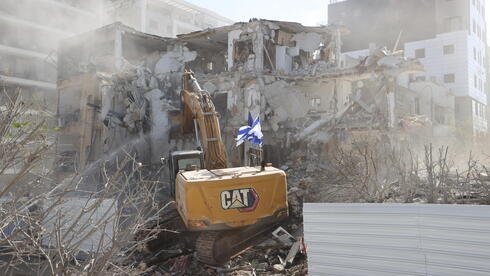Residents of Revivim, Shlomi, and Mekhora, who saw newspaper headlines screaming "The Center Under Fire," have known this reality for a long time. Now the Tel Aviv metropolitan area is discovering firsthand what border communities are forced to relearn with each round: when the concrete wall collapses—the human wall is the last line of defense.
Anyone who has spent time in a Tel Aviv shelter during a missile attack knows the gradual transformation that occurs in a high-rise building. From faceless strangers encountered in elevators, connections and acquaintanceships slowly form between neighbors.
Each neighbor finds their familiar corner in the shelter, and the sense of alienation and estrangement that characterizes the city blurs under the shared threat. It's grim to say this, but this covenant of destiny that brings everyone together in stairwells or neighborhood shelters is a good foundation to start from—especially after being hit and forced to evacuate.
As in every cinematic battle, the strongest enemy is saved for last, and so among the seven fronts, the Israeli government left Tehran for the end. The Iran front changed the geographical equation, but it doesn't cancel out the lesson already learned from the borders.
In recent years, community mechanisms of mutual aid, emergency routines, informal education, and flexible employment opportunities have emerged at the edges of the country. They were born out of necessity, under the barrage of rockets endured by border residents, or when the North dealt with a hundred consecutive days ofunder fire. The model that suits communities in Manara and Be'eri will also suit the residential towers in Herzliya and Petah Tikva—it just needs to be adjusted to fit.
Yes, the urban arena is denser, and damage to a residential tower differs from the destruction of a private house in a moshav, but the basic principle is the same: first and foremost comes temporary housing solutions that prevent endless migration between relatives and hotels.
Across northern, southern and eastern Israel, hundreds of empty apartments still stand—abandoned in the past year or not yet populated. Local authorities have already opened "open home" groups and are assembling apartment pools for residents displaced from central Israel, seeking shelter and frameworks for children while homes are rebuilt.
This is the time for government ministries and philanthropic foundations to mobilize: to finance temporary relocation, basic apartment insurance, and high-speed internet, so people can return to work without falling into the financial trap of Tel Aviv's high cost of living.
After housing comes social connection. From my work with student villages and the youth networks of Kedma on the borders, I’ve learned that communal bonfires, youth meetups and senior gatherings are not symbolic—they meet a deep post-trauma need.
Even in a high-rise hit by a missile the heart of the city, it's possible to establish an "urban commune": the third floor hosts a children's playroom, the sixth floor organizes fitness classes in the shared living room, and on the roof neighbors open an evening observation post looking at skies that take on new meaning (of course, in accordance with Home Front Command guidelines). Experience teaches that when every age group finds a role, grief transforms into a sense of mission.
 irael Cohen
irael CohenThe question is no longer "where is the periphery?"—it’s “who’s still safe?” If another tower falls in Ramat Gan, Tel Aviv could feel—for one night—like a tiny village in the Upper Galilee.
But if we build networks of attentive neighbors and allow the flow of people and skills between the center and the frontiers, we will overcome this crisis not just through concrete, but through spirit. The confrontation with Iran showed that distance from the front doesn’t guarantee security. What does is our ability to drive a few kilometers, open a stranger’s door, and say: welcome home.
The writer is the founder and president of Kedma, an organization working for the benefit of Israel’s periphery area.


